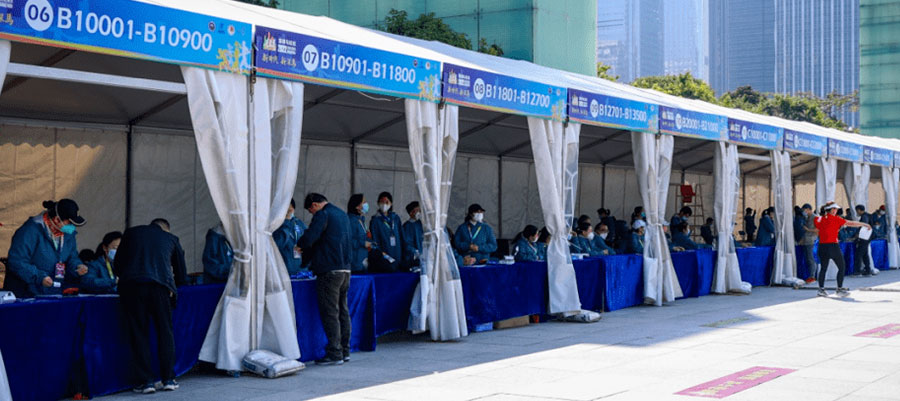At 7:30 on February 19, 2023 (this morning), the Honor·2022 Shenzhen Marathon will start in the Civic Center, opening a "running carnival" for all marathon lovers.
![]()
After fierce competition, player He Jie won the men's team championship in 2 hours, 13 minutes and 29 seconds. This is also the first time that a Chinese player won the championship in Shenzhen Marathon.
![]()
Adullah Alemayehu from Ethiopia won the women's championship in 2 hours, 34 minutes and 19 seconds.

Player Suolang Cairen won the half-marathon men's championship with a time of 1 hour and 6 minutes. Contestant Tsering Tsomo won the half-marathon women's championship with a time of 1 hour, 16 minutes and 42 seconds.
This Shenzhen Marathon has two events: a full marathon (42.195 kilometers) and a half marathon (21.0975 kilometers). The total number of participants is 20,000, including 10,000 participants for the marathon (including 300 groups), and 10,000 participants for the half marathon. Full marathon runners come from 14 countries and regions, including 34 foreign runners and 78 Hong Kong, Macao and Taiwan runners; half marathon runners come from 23 countries and regions, including 48 foreign runners and 100 Hong Kong, Macao and Taiwan runners.
This Shenzhen-Malaysia route has been upgraded compared to the previous ones. The entire route starts from the Civic Center, spans four areas including Futian, Nanshan, Baoan and Qianhai, passes through Shennan Avenue, Shahe West Road, Wanghai Road, etc., and ends at Qianhaishi Park. This route presents the "city business card" that represents Shenzhen's characteristics, such as: Splendid China Folk Village, Window of the World, High-tech Park, Dasha River, Talent Park, Nantou Ancient City, etc.
Citizens participating in the marathon receive event wristbands and RFID number bibs (RFID tags), and then complete the RFID chip detection of the RFID number bib, as well as entry uniforms, entry bags (entry guides, raincoats, paper towels, wet tissues, and hand sanitizer) , alcohol disinfection, etc.).


The scale of the marathon is definitely a large-scale event, because the number of participants is tens of thousands. In a marathon event, there is a very heavy workload on the management of the contestants before the start of the race, at the starting point, during the race and at the finish line. RFID technology can be used to check the runners at the starting point to ensure that the distance the runners run is correct and complete, and record the time of the final sprint.
1. RFID event wristbands and RFID number bibs are worn by marathon participants as RFID tags;

2. Set up a fixed RFID reader at the starting point of the marathon to quickly complete the inspection of the participants (who have already worn the RFID number bib);
3. Set up fixed RFID readers as check-in points at different mileage points of the marathon. Participants need to complete the check-in when they encounter check-in points on the way. The terminal system records the check-in records of all check-in points, and the final score is valid;

4. A fixed RFID reader is also installed at the finish line of the marathon. When a competitor crosses the finish line, the RFID number bib on his chest will be read to the athlete's information and the reading time will be recorded, which can accurately record the athlete's competition results , Uploaded to the server system, the organizer can use this record to judge the ranking and award the winners. Even all marathon participants can log in to the official website or the official App to check their own results or past participation records.
